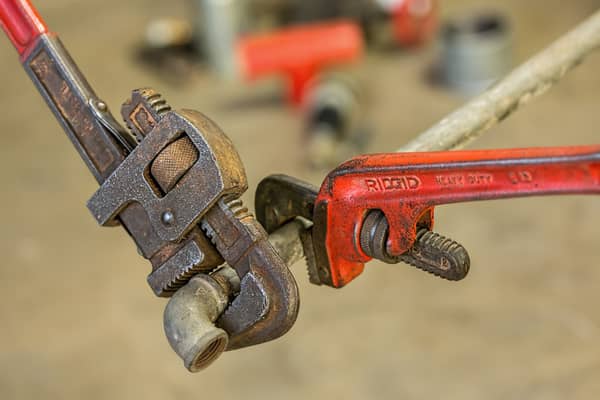Avoidance of Everyday Plumbing Problems in Your Home: A Step-by-Step Guide
Avoidance of Everyday Plumbing Problems in Your Home: A Step-by-Step Guide
Blog Article
Were you on the lookout for insight concerning How to Deal With and Prevent Common Plumbing Problems?

Intro
Keeping a practical plumbing system is essential for a comfy home. By taking preventive measures, you can avoid usual plumbing concerns that may disrupt your life and sustain expensive repair work.
Screen Water Pressure
Watch on your water pressure to avoid tension on your pipelines and appliances. High water stress can result in leaks and damage gradually. Take into consideration installing a stress regulatory authority to keep optimal water stress throughout your home.
Inform Home Members
Inform everybody in your home concerning appropriate plumbing techniques. Instruct them what should and should not be flushed or taken care of down the tubes to prevent preventable plumbing issues.
Secure Pipelines from Freezing
Throughout winter, take actions to avoid your pipelines from cold. Protect revealed pipes, especially those in unheated locations like cellars and attic rooms. Enable taps to trickle throughout freezing temperatures to prevent water from cold in the pipes.
Address Leakages Immediately
Deal with any kind of leaks or drips as soon as you see them. Even small leaks can drainage and trigger damages to your home in time. Tighten up loosened fittings or replace damaged seals to prevent leaks from worsening.
Routine Upkeep Checks
Frequently inspecting your plumbing system is crucial for identifying prospective concerns prior to they escalate. Check pipes, faucets, bathrooms, and home appliances for leaks, rust, or indicators of wear and tear.
Watch What You Flush
Be mindful of what you flush down your toilets. Avoid flushing items such as wipes, cotton spheres, sanitary products, and paper towels, as these can cause clogs and backups in your pipelines.
Appropriate Disposal of Oil and Food Waste
Dispose of oil, oils, and food scraps appropriately to prevent build-up in your pipes. Prevent pouring grease down the drain, as it can solidify and create clogs. Utilize a strainer in your cooking area sink to capture food particles and vacant it consistently.
Be Mild with Plumbing Components
Prevent using excessive pressure when running plumbing fixtures such as taps and valves. Rough handling can create deterioration, bring about leaks and other breakdowns.
Normal Drain Cleaning
Set up normal drain cleaning to prevent accumulation of hair, soap scum, and other debris. Utilize a drain serpent or chemical cleaner to get rid of obstructions and maintain smooth water drainage.
Install Water Softeners
Take into consideration mounting a water conditioner if you have tough water. Tough water can create mineral build-up in your pipes and home appliances, resulting in lowered water circulation and performance.
Final thought
Protecting against typical plumbing issues in your house requires persistance and regular maintenance. By adhering to these preventive measures, you can make sure that your plumbing system runs efficiently and stay clear of pricey fixings in the future.
Expert Tips for Preventing Common Plumbing Issues
Keep Drains Clear and Functional
Regularly clean drain covers and hair-catching devices to eliminate debris and prevent buildup. Avoid disposing of grease, oil, or coffee grounds down your drains, as they can congeal and accumulate over time, creating obstructions. Consider using a biodegradable drain cleaner periodically to break down organic matter and maintain clear pipes. Prevent and Identify Leaks Early
Regularly inspect visible plumbing connections, pipes, and fixtures for signs of moisture or corrosion. Fix loose connections or replace damaged components as needed. Install water leak sensors in high-risk areas such as under sinks, near water heaters, and around washing machines to provide early warning of potential leaks. Monitor your water bill for sudden increases in usage, which may indicate a hidden water leak. Protect Plumbing from Freezing Temperatures
Allow faucets to drip slightly during extremely cold weather to prevent freezing and pressure buildup inside the pipes. Seal gaps and openings in walls, doors, and windows near plumbing to prevent drafts from reaching your pipes. Maintain Optimal Water Heater Performance
Schedule annual professional maintenance of your water heater, including checking pressure-relief valves, flushing sediment buildup, and inspecting for corrosion or leaks. Maintain the manufacturer-recommended temperature setting, typically around 120°F (49°C), to optimize energy efficiency and prevent scalding. Consider installing an expansion tank in your system if you have a closed-loop water supply, which prevents excessive pressure buildup and potential water heater failure. https://www.climatecontrolkc.com/blog/plumbing/tips-for-preventing-plumbing-issues/

Do you really like more info about 6 Common Plumbing Problems and How to Fix Them? Create feedback down the page. We'd be happy to find out your responses about this blog entry. We hope that you come back again in the future. Sharing is caring. You never know, you may just be doing someone a favor. I am grateful for being here. Revisit us soon.
Click Here Report this page